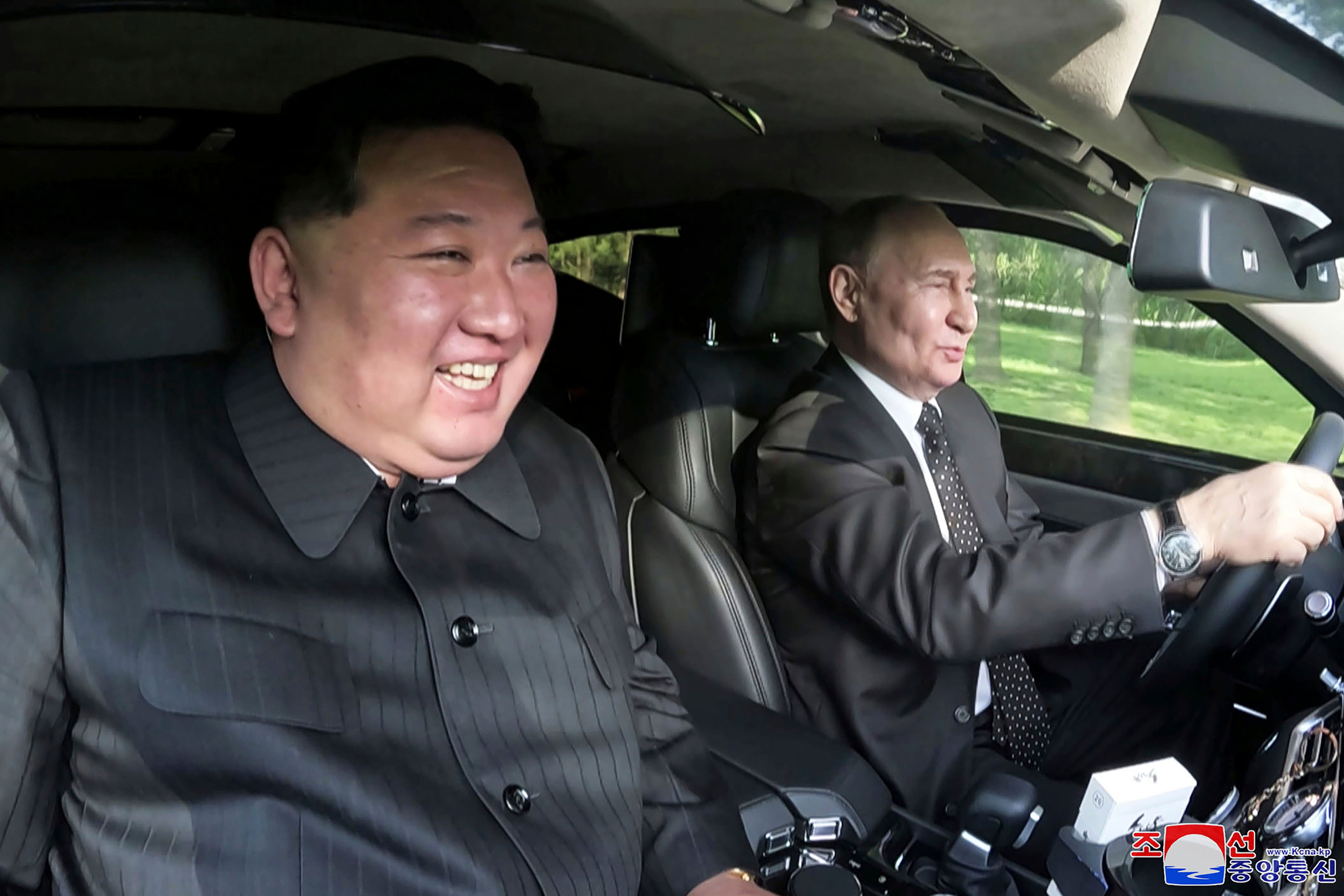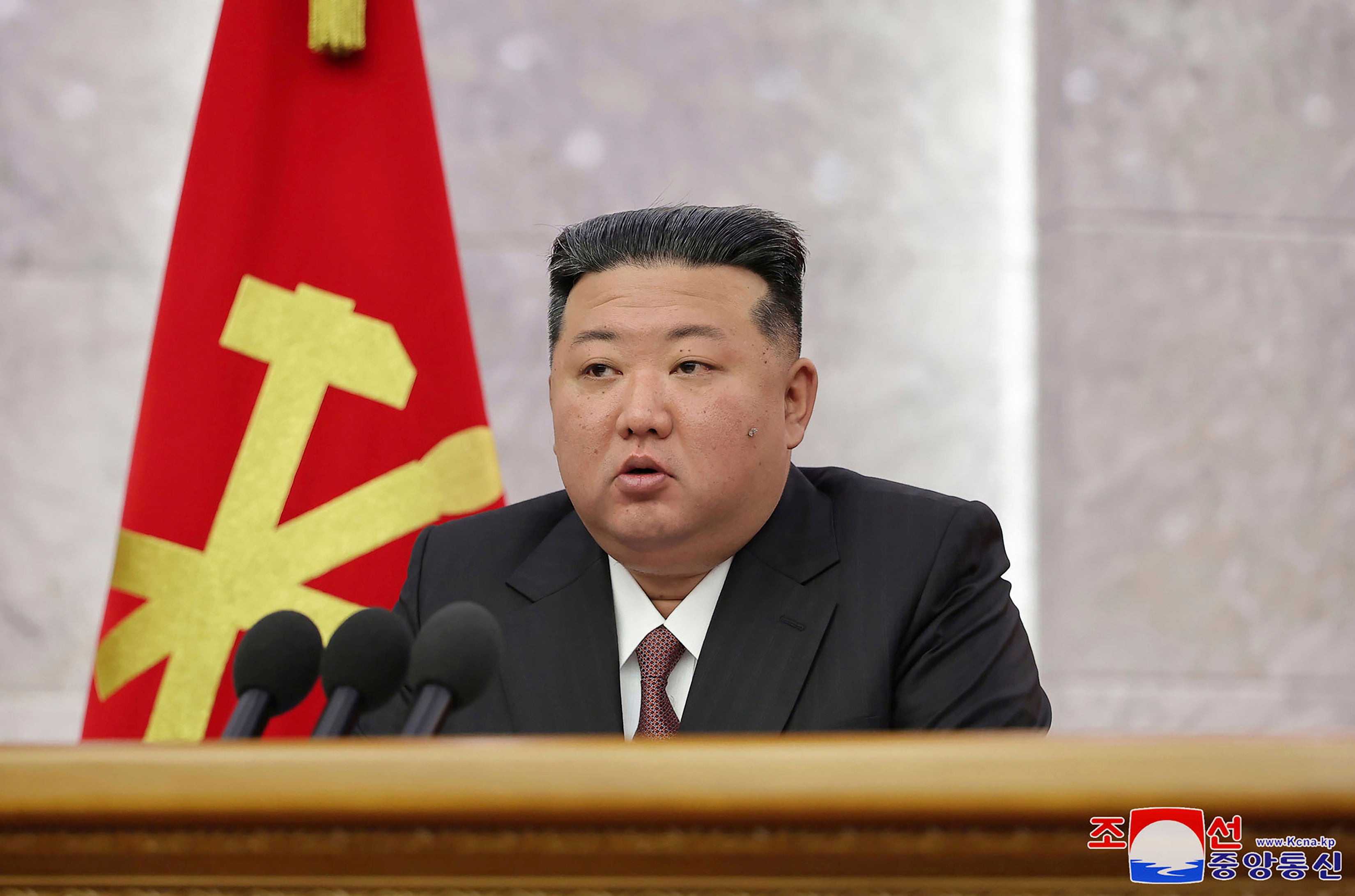The tiny detail that shows Kim Jong Un’s popularity is on the rise in North Korea
Kim is currently grappling with economic hardships and the influence of South Korean pop culture

Your support helps us to tell the story
From reproductive rights to climate change to Big Tech, The Independent is on the ground when the story is developing. Whether it's investigating the financials of Elon Musk's pro-Trump PAC or producing our latest documentary, 'The A Word', which shines a light on the American women fighting for reproductive rights, we know how important it is to parse out the facts from the messaging.
At such a critical moment in US history, we need reporters on the ground. Your donation allows us to keep sending journalists to speak to both sides of the story.
The Independent is trusted by Americans across the entire political spectrum. And unlike many other quality news outlets, we choose not to lock Americans out of our reporting and analysis with paywalls. We believe quality journalism should be available to everyone, paid for by those who can afford it.
Your support makes all the difference.North Korean officials have been seen wearing pins with the image of leader Kim Jong Un, in a small sign that shows he is boosting his personality cult to the level bestowed on his late dictator father and grandfather.
North Koreans are required to wear pins over their hearts which for decades bore images of either the country’s founder, Kim Il Sung, or his son Kim Jong Il, or both. The existence of pins dedicated to Kim Jong Un had not been verified until state media published photos on Sunday showing officials wearing his pins at a ruling Workers’ Party meeting.
The pins are part of a state-sponsored mythology surrounding the Kim family which treats Kim Il Sung and Kim Jong Il like gods. They are memorialized with numerous statues across North Korea, their birthdays are two of the country’s main holidays and their portraits are hung in all homes and offices.
Few question current leader Kim Jong Un's hold on power, but few images honoring the 40-year-old have been displayed in public since he took power in late 2011 upon his father's death. Recently, however, he has begun taking steps to build his own personality cult while also trying to further move out of the shadow of his father's and grandfather's legacies.
In May, his portrait was publicly displayed along with those of the two other Kims for the first time at a Workers' Party-run training school. In January, Kim announced he will no longer pursue peaceful unification with South Korea, a decadeslong policy cherished by his father and grandfather. Observers also say North Korea appears to be refraining from using terms like “the Day of Sun,” a reference to the April 15 birthday of Kim Il Sung.

“The latest series of efforts to idolize Kim Jong Un is assessed as a move to dilute his predecessors while establishing his authority as a leader” different from them, Kim Inae, a deputy spokesperson for South Korea’s Unification Ministry, told reporters Monday.
She said Kim is also likely trying to boost internal solidary behind his leadership as he grapples with economic hardships and the influence of South Korean pop culture.
Ahn Kyung-su, head of dprkhealth.org, a website focusing on health issues in North Korea, said Kim Jong Un is trying to phase out the symbols representing the legacies of his predecessors to promote his own era. But as the third-generation leader in the Kim family, he will find it difficult to push too far because that would weaken the legitimacy of its dynastic rule, said Ahn, who has interviewed many North Korean defectors and closely monitors North Korean state media.
“Kim Jong Un is in a dilemma. He wants to stay away from his father's and grandfather's legacies more but he can't do so," Ahn said.

He said North Koreans are now expected to wear Kim Jong Un pins.
Some experts say Kim's moves are also related to his reported push to make his preteen daughter his heir in another hereditary power transfer.
South Korea's spy agency said in January that it sees Kim's daughter, reportedly named Ju Ae and aged about 11, as her father’s likely heir apparent. But some analysts say it's still too early to call her Kim's successor, citing her age and North Korea's male-dominated hierarchy.